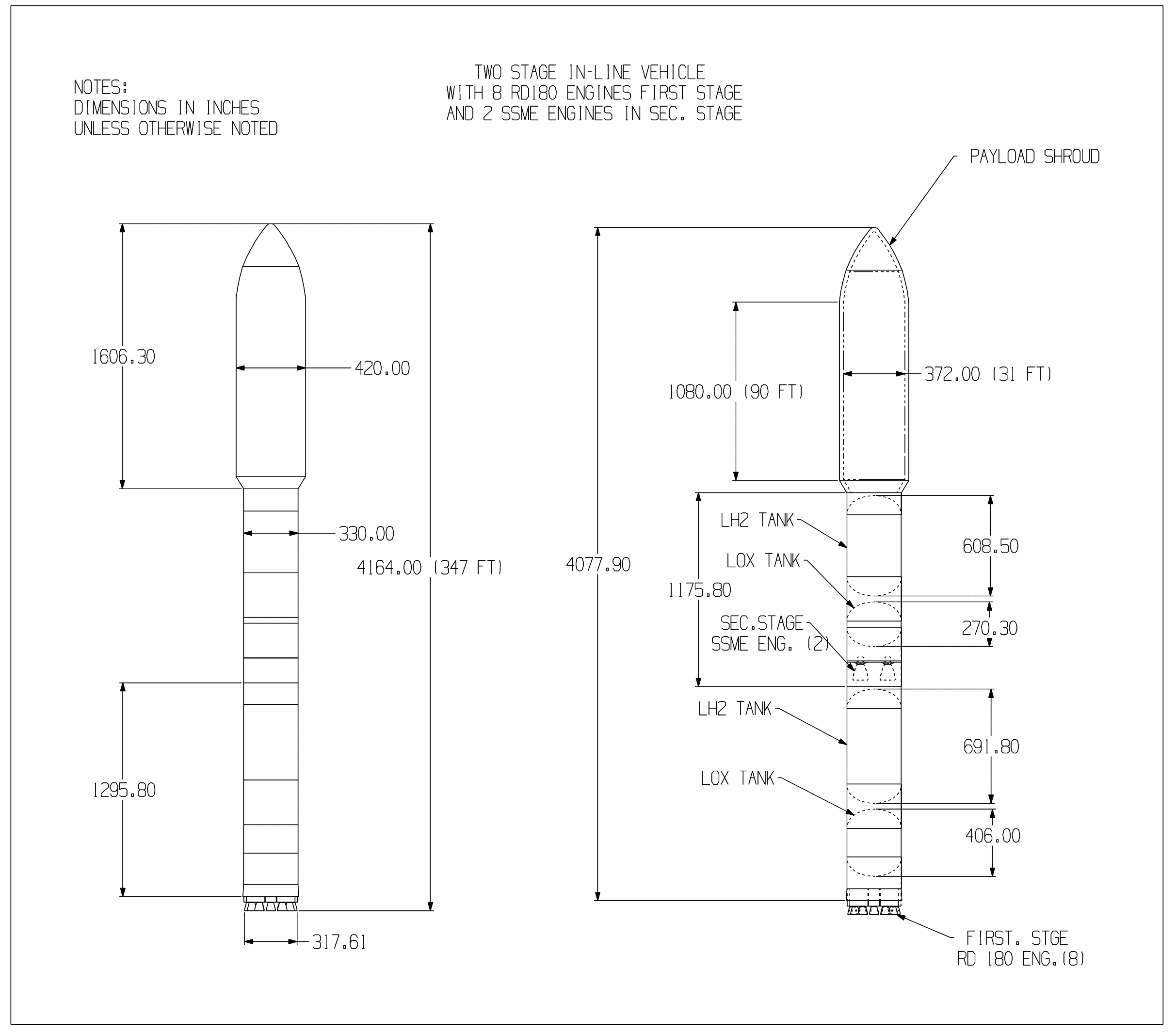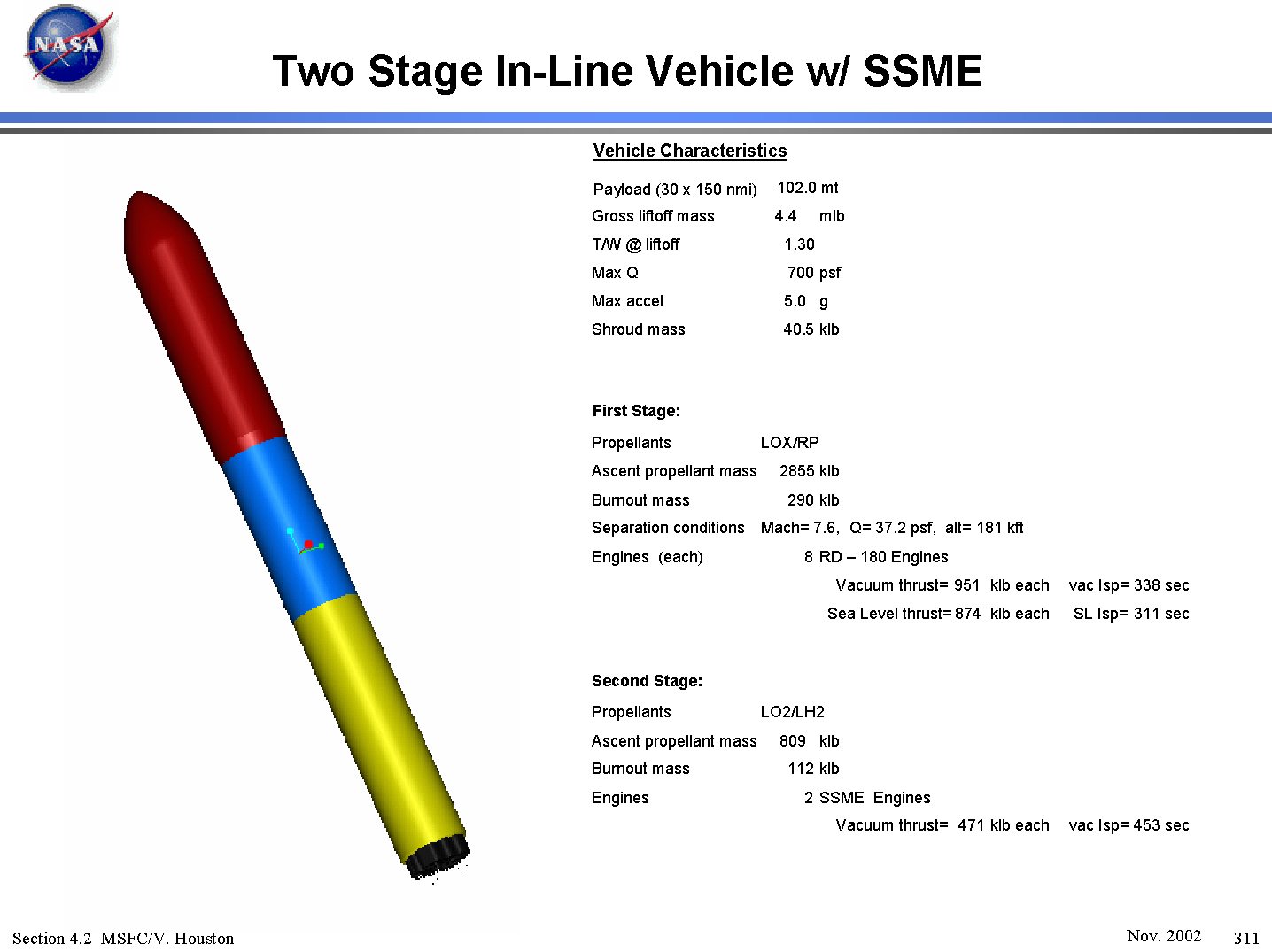Before the Constellation program began, NASA had looked at the requirement sof a manned Mars program. In 2007 NASA-Johnson released an “Exploration Blueprint Data Book” documenting the results of a 90-day study conducted from September to November 2002.
The report was fairly substantial, insofar as 600 pages of Powerpoint presentations can be considered “substantial.” A fair portion of it dealt with launch vehicles that could support the effort. Along with the usual Shuttle-derived designs, there was also a Saturn V-derived concept. Apart from being a two-stage vehicle with RP-1 fuel for the first stage and hydrogen for the second, it actually had little in common with the Saturn V. Propulsion for Stage 1 was provided by eight Russian RD-180 rocket engines (the type used on the Atlas V), and Stage 2 was powered either by SSME’s modified for air start or J-2S’s. Payload delivered to a 30 by 150 nautical mile orbit (clearly circularization was required) was a substantial 102 metric tons.
The design seems to have been fairly rudimentary.
Here’s the DWG file of the layout drawing, if’n you’re into that sort of thing…
5 Responses to “The Saturn V from 2002”
Sorry, the comment form is closed at this time.


the layout drawing has a little error
first stage fuel is NOT LH2 but RP-1 Kerosin !
Eight RD-180 engines?
Shades of Saturn I.
Each RD-180 has 2 chambers so that could be 16 nozzles!
Yeah, it’s heading into N-1 territory in regards to number of engine bells.
[…] with the two-stage “Saturn v derived” design previously shown, in 2002 NASA also looked at a vehicle composed of ”Magnum” core vehicle (essentially […]